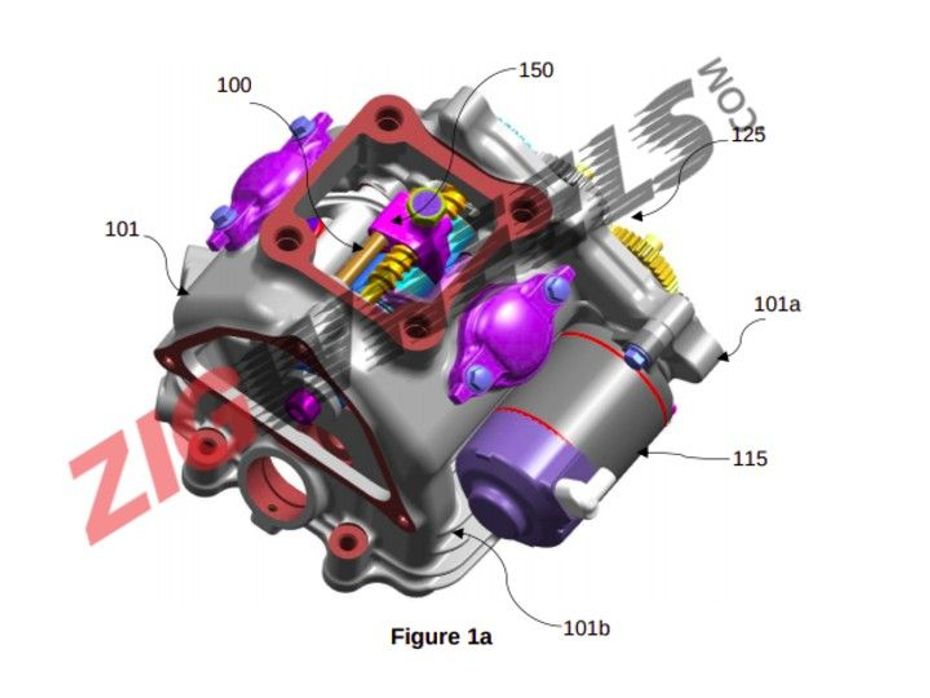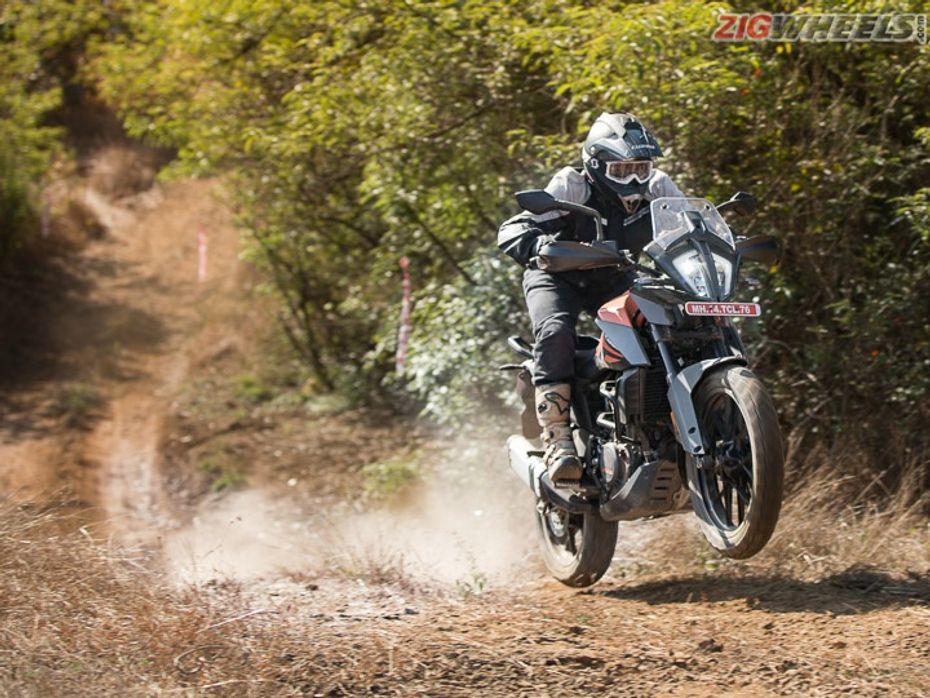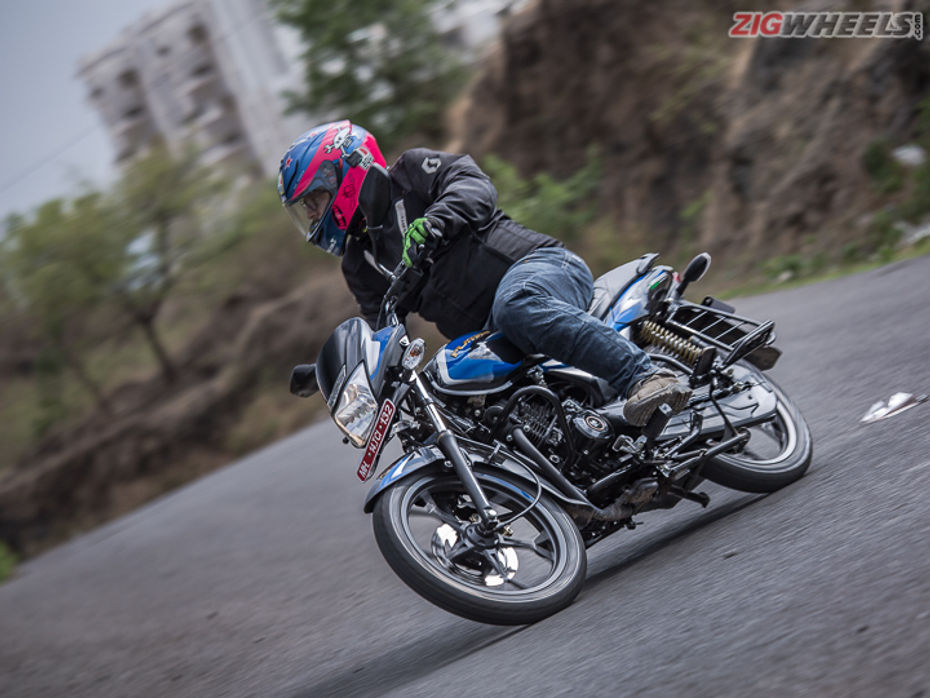
Your Weekly Dose Of Two-wheeler News
- Oct 30, 2021
- Views : 12758


In our recent exclusive report, we had uncovered Bajaj Auto’s Variable Valve Actuation (VVA) technology, likely to be used in the company’s upcoming higher-capacity motorcycles. Bajaj had also revealed in the technical documents that the technology is versatile enough to be compatible with several engines, including retrofitment to existing ones. We delve deeper on this, and also analyse the kind of motorcycles we’d like to see this technology in the future:
Adaptable Technology:

While the system shown in the leaked documents was applied to a simple two-valve engine, Bajaj mentioned in the document that the VVA tech can be applied to multi-valve, multi cylinder engines and even hybrid motors. It is also compatible with single and multiple spark plug-equipped engines or any engine irrespective of fuel type. That means it could even be applied to flex-fuel engines!
While the system shown earlier consisted of two evenly machined lobes, the technology is also designed in a way to accommodate a camshaft with multiple lobe profiles. This will in turn control not only the valve timing but also the valve lift, thereby enhancing the engine’s efficiency.
Since the valve timing is essentially controlled by the electric motor, it also opens up the possibility of manually controlling the electric motor for different valve timings - something that will go hand-in-hand with multiple riding modes. This, coupled with the multiple lobe configuration, could allow Bajaj to extract a lot more from the engine than what the ECU and ride-by-wire-driven riding modes can.
Retrofit-friendly Feature:

Developing brand new technology is fairly straightforward, but from a business perspective, it’s just the job half done. To ensure new technology is utilised to the maximum, Bajaj has made sure the new VVA tech can be retrofitted to existing engines with just minor changes in the head. So this opens Bajaj to the world of possibilities of implementing it on several of its existing lineup.
There is a strong possibility that this technology would also make its way to the Bajaj-produced small capacity KTM engines currently ranging from 125cc to 373cc. The KTM 125 Duke was notorious for its narrow powerband, so the VVA technology could go a long way in making the engine a little more tractable. Another great example where this VVA tech could enhance the engine performance is the KTM 390 Adventure. The lack of low-end grunt is its only Achelees’ heel, and this issue can be mitigated with the new VVA tech. We could also see this tech making its way to the upcoming Bajaj-Triumph motorcycles.

And if Bajaj manages to achieve healthy economies of scale, we wouldn’t be surprised if the tech is carried over to smaller-capacity commuter motorcycles such as the Bajaj Platina range. The massive price hikes and rising fuel costs in recent times are pushing the smaller capacity two-wheelers to the forefront as the 150cc and above segment are becoming absurdly expensive for what they offer. One of the major drawbacks of smaller capacity 110cc and 125cc bikes is that the highway performance isn’t adequate enough. With VVA, Bajaj will be able to solve this conundrum, at least to a certain extent.
No matter which direction Bajaj Auto heads, it certainly looks rosy as Bajaj has made sure its invention can be exploited to the maximum possible extent.

Your Weekly Dose Of Two-wheeler News

The Latest Bajaj Pulsar 250F Teaser Shows Off More Details

New Generation Of Pulsarmania Starts Tomorrow Onwards

Weekly Two-Wheeler News Wrapup: Royal Enfield Guerrilla 450 Spied...

2024 Bajaj Pulsar F250: Top 5 Highlights Explained

2024 Bajaj Pulsar F250 Launched At Rs 1,50,829

1,000km in 2 days - Bajaj Pulsar F250 Touring Review

Bajaj Pulsar 220F Launch Confirmed; Bookings Open
 TVS Apache RTR 160
TVS Apache RTR 160
 Bajaj Pulsar NS200
Bajaj Pulsar NS200
 Bajaj Pulsar NS160
Bajaj Pulsar NS160
 Bajaj Pulsar N160
Bajaj Pulsar N160
 Yamaha R15S
Yamaha R15S
India's largest automotive community
 Bajaj Pulsar NS200
Rs. 1.58 Lakh
Bajaj Pulsar NS200
Rs. 1.58 Lakh
 Bajaj Pulsar 125
Rs. 83,846
Bajaj Pulsar 125
Rs. 83,846
 Bajaj Pulsar NS 125
Rs. 1.01 Lakh
Bajaj Pulsar NS 125
Rs. 1.01 Lakh
 Bajaj Pulsar NS160
Rs. 1.47 Lakh
Bajaj Pulsar NS160
Rs. 1.47 Lakh
 Bajaj Pulsar N160
Rs. 1.33 Lakh
Bajaj Pulsar N160
Rs. 1.33 Lakh
 Bajaj Chetak
Rs. 1.20 Lakh
Bajaj Chetak
Rs. 1.20 Lakh
![Bajaj Chetak [2020 - 2024] Bajaj Chetak [2020 - 2024]](https://media.zigcdn.com/media/model/2024/Sep/bajaj-chetak-2025-right-side-view_135x90.jpg) Bajaj Chetak [2020 - 2024]
Rs. 99,998
Bajaj Chetak [2020 - 2024]
Rs. 99,998